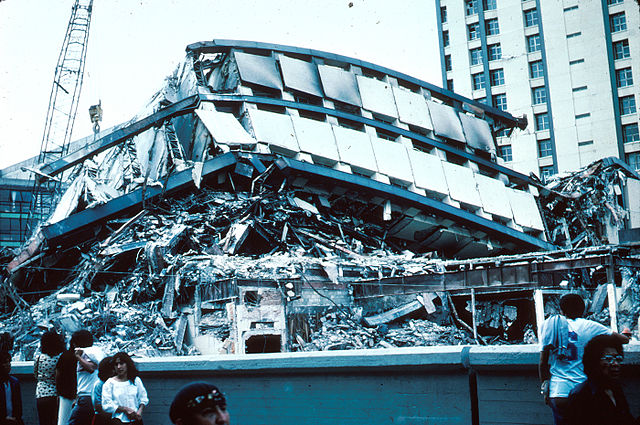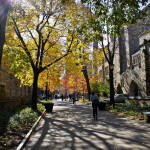Como un polvorón crujiente, un mazapán recién abierto
Los edificios de la ciudad se derrumbaron
Convertidos en un polvo cruel
Las calles se llenaron de personas preocupadas,
Ciudadanos confundidos, tal vez derrotados
Tan sólo lo pude ver en las noticias
Con seres queridos, yo no pude estar
Gracias a dios, la mia esta bien, pero que de las otras familias,
Las casas y hogares
Que nunca jamas seran igual?
Tan sólo pude preocuparme sobre las vidas interrumpidas
Los niños perdidos
Una tristeza nacional
Ojala pudiera decirle a los afectados, que todo estará bien
Pero, qué se yo sobre este dilema?
Quisiera ser capaz de reconstruir la ciudad
capaz de aliviar a los heridos
de abrazar a los afectados
de buscar a los perdidos
Sin embargo-
Solamente puedo expresar mis condolencias
En mi español imperfecto
Solo puedo observar esta tragedia
Desde una lejanía.
I remember hearing stories of the earthquake of 1985. A day of worry and uncertainty for many, not knowing if your loved ones, or anyone you knew was safe. Worrying for those across the city without access to communication. My aunts and mother retold their experiences to me, as we walked along the cracked sidewalks and time-worn buildings of Mexico City on our way to el supermercado. I was shocked by the details, not knowing how to react or fathom a disaster of that scale. Even then, I could only empathize. I could only imagine what it must feel like -that feeling of startlingly being awoken by your shaking bed, and the swaying building. For a moment, your apartment swaying como gelatina. The structure defying gravity and the hinges straining as if in an attempt to stay united, at odds with an immense force.
This theme of unification and connection, amidst disintegration, was a main take-away from the events of September 19, 1985 and the following weeks of reconstruction. Much like the shaken buildings and infrastructure of the city, it was reflected in the people and the nation. This collective effort to come together in solidarity to withstand a force that could have easily torn them apart, was something to marvel at.
But it seemed like an event of that magnitude was in the past.
Until exactly 32 years later.
In a cruel twist of fate, on the day of commemoration for the losses of 1985, another earthquake shook Mexico City. On September 19, 2017, the tremors extended throughout central Mexico, but their impact was felt worldwide.
Entire buildings quaked and shattered. Mothers fell to their knees, crippled by the pain; distraught as the reality hit them, just as the bricks hit the concrete. How must it feel to go about your day, and then feel it all crumble down around you?
Within moments, stories flooded the news, videos circulated the internet, social media grappled with an inevitable, overwhelming sadness. Prayers were sent out to family, strangers, and nations as a whole.
And, even now as I write this, another has struck the nation.
I don’t know how to feel about this devastation, how to feel about the guilt of not being able to be there, how to feel about the privilege of being far away enough to not be directly, physically, affected by the repercussions of that natural disaster. I do not know how to deal with my distance from the many other events happening in Mexico, Central and South America, and the Caribbean; from those events affecting the southern areas of the United States; from the political turmoil and the daily emerging conflicts and complications present for marginalized communities here and there. I can not even begin to discuss the mess that this year has been, but I just need to express my shock, disappointment, confusion, and sadness that I cannot be present with my family or those affected.
My heart goes out to all those affected in any way, shape, or form, by the earthquakes in my beloved Mexico, as well as all the other disasters assailing the world in this frustrating, distressing, and heart-breaking year of 2017.
Karina Di Franco TD’21 / She can reached at karina.difranco@yale.edu

